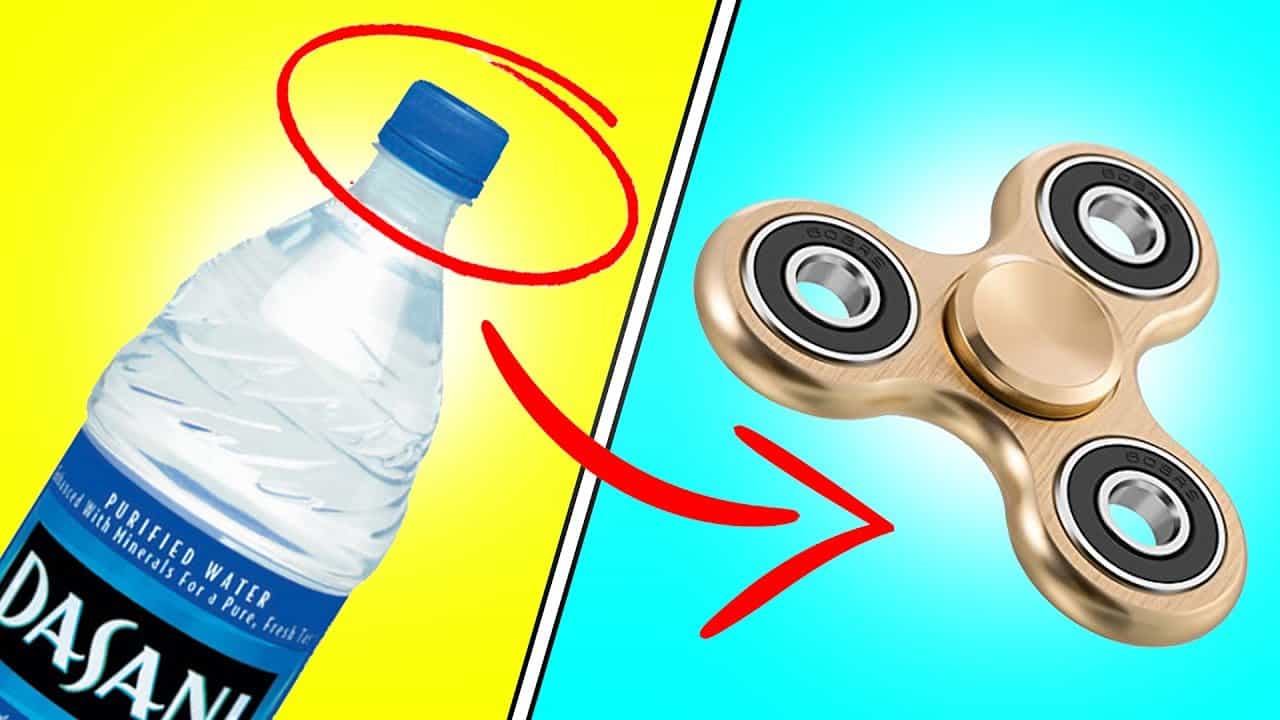DIY Fun: How to Make a Homemade Spinner for Kids!
Hey there, creative parents and crafty kiddos! Are you looking for a new project that’s both entertaining and super easy to make? Look no further, because today we’re diving into the colorful world of homemade spinners! Making a spinner with your children is not only a fantastic way to engage their imagination but it also helps with their motor skills, and they’ll have a blast in the process!
What You’ll Need to Make Your Spinner
Before we start spinning our way into fun, let’s make sure we have all the materials on hand. Don’t worry, most of these items are likely already in your home, or they’re a snap to find at any craft store. Here’s what we’ll need:
- Cardstock or a sturdy paper plate
- A toothpick or a small nail
- Markers, crayons, or paint
- A pencil with a good eraser
- Scissors (safety scissors for the little ones!)
- A paperclip or a small bead
- Glue or strong adhesive tape
Step-by-Step Spinner Construction
Alright, team DIY, let’s get spinning! Follow these steps, and you’ll have a delightful spinner that will keep the kiddies enthralled for hours.:
- Choosing Your Base: Decide whether you’re going with cardstock or a paper plate. Cardstock allows for more shape flexibility, while a paper plate is sturdier and ideal for younger children.
- Cutting Out Your Shape: Draw a circle (or any shape you’d like!) on your cardstock or use the paper plate’s natural shape. Next, carefully cut out your shape.
- Decorate, Decorate, Decorate: This is where creativity shines! Let your kids decorate their spinner with markers, crayons, or paint. Adding numbers, letters, or various colors can turn the spinner into a learning tool as well.
- Finishing Touches: Once the decoration is dry, poke a small hole through the center of the spinner. If you’re using a toothpick, a bead or paperclip can help it spin more smoothly. Thread it through the hole and secure it with glue or tape underneath. Make sure it’s centered so your spinner doesn’t have a wobbly spin.
- Attaching the Spinner Base: Take your pencil and, using the eraser end as a base, affix your spinner top to it. If you’re using a nail, push it into the eraser but be sure it does not poke through the other side. If using a toothpick, glue it to the center of the eraser.
- Test & Play: Give your spinner a test whirl! Place the spinner between your thumb and middle finger and flick it with your other hand. It should spin freely and evenly if you’ve centered the toothpick or nail correctly.
Safety Tips for Spinner Making
As with any crafting project, especially those involving small parts and sharp tools, safety comes first:
- Always supervise your children during the craft, particularly when using scissors or if you’re using a nail for the center of the spinner.
- Opt for non-toxic paints and markers to keep things kid-friendly and safe for all ages.
- Make sure all small parts are securely attached to avoid choking hazards.
Creating a homemade spinner with your kids is not just about the spinning; it’s about the precious time spent together, the skills they learn through creating, and the joy of playing with something made by their own tiny hands. Stay tuned, as we’ll continue with more creative tips on how to enhance your spinner game, including ways to use this new toy for educational games, party favors, and more!
So there you have it, the perfect craft for a rainy day, a playdate, or simply when you’re in the mood for some spinning fun. Follow these simple steps, keep safety in mind, and get ready to watch your children’s eyes light up with pride as they play with their very own homemade spinner!

5 Things Parents Should Know When Preparing to Make a Spinner
Before we jump into the exciting world of creating your homemade spinner, let’s go over a few key pointers that will make the process smoother and even more enjoyable:
- Preparation is Key: Gather all materials before you start. Nothing halts the fun like having to pause to hunt down a missing marker or piece of cardstock. Set up a crafting space with everything within arm’s reach!
- Choosing the Right Materials: When selecting the base for your spinner, consider the age and skill level of your kids. Younger children may do better with paper plates which are easier to handle, while older children might enjoy the flexibility of choosing shapes in cardstock.
- Embrace the Mess: Crafting can get a bit chaotic, especially with paint and glue involved. Cover your work area with old newspapers or a disposable tablecloth. It’s easier to enjoy the creative process when you’re not worried about the cleanup!
- Safety First: Even creative fun needs a dash of caution. If your spinner design requires a nail or sharp object for the center, take charge of that step to prevent accidents. Also, always have the kiddos use safety scissors under supervision.
- Patience is a Virtue: Remind your children (and yourself!) that sometimes crafts don’t turn out perfect on the first try, and that’s okay. Making a spinner is about learning, laughing, and bonding. It’s perfectly fine to take your time and enjoy the journey.
With these little nuggets of wisdom, you’re now set to create magical spinner adventures with your little ones. Remember, it’s about creating memories just as much as it’s about creating a fun toy!
Now, let’s continue our crafting journey as we offer some imaginative spins on your new homemade toy!
Enhancing Your Spinner: Creative Ideas and Educational Twists
The fun doesn’t stop once you’ve made your spinner! No sirree! Here are some nifty ideas to keep those spinners, well, spinning in new and exciting directions:
- Color Wheel Learning: Use your spinner for a fun lesson on colors. Have your kids mix primary colors on different sections to discover what new colors appear when the spinner rotates!
- Number Fun: Number each section of the spinner and use it to play math games. Spin to practice addition, subtraction, or even multiplication for those little math whizzes!
- Storytime Spinner: Each section can represent a character or setting. Spin to start a story and keep spinning to add elements. It’s a great way to spark creativity in storytelling!
By following this guide, you’re not just making a simple toy—you’re opening the door to endless fun and learning experiences!
See more great Things to Do with Kids in New Zealand here. For more information see here
Disclaimer
The articles available via our website provide general information only and we strongly urge readers to exercise caution and conduct their own thorough research and fact-checking. The information presented should not be taken as absolute truth, and, to the maximum extent permitted by law, we will not be held liable for any inaccuracies or errors in the content. It is essential for individuals to independently verify and validate the information before making any decisions or taking any actions based on the articles.




